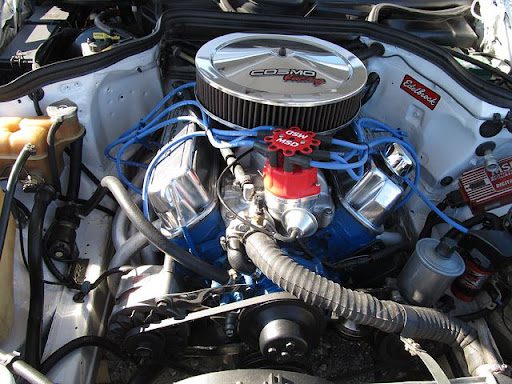It’s About Time: Timing Belt Replacement in Ann Arbor

Many of us never hear of a timing belt unless it breaks – then we hear too much! To prevent an event that can destroy your whole engine, you should learn what the timing belt is and what it does.
What’s a Timing Belt?
Timing belts are made of rubber, polyurethane, and Kevlar. They have hard teeth and keep all the moving parts of your engine and other components working together. In some cars, the “belt” may be a chain, but they all do the same thing. Check your owner’s manual to learn what you have.
A timing belt is NOT the same thing as a serpentine belt. The timing belt, located outside the engine, is usually under a cover at the front of the engine, while a serpentine belt is inside the engine, where lubrication can occur.
The belt (or chain) works like a bicycle chain and synchronizes all the internal moving parts of an engine. In addition to powering the water pump, the oil pump, and the injection pump, it synchronizes the crankshaft and camshaft movements to allow the intake and exhaust valves to open and close in time with the pistons.
Because it consists of rubber, the teeth of the timing belt will wear down or fall off over time, and the belt itself can eventually break. If you have a timing chain, you’re lucky, because they often last for the lifespan of the motor vehicle.
Replacing the timing belt should occur at the mileage intervals recommended by your vehicle manufacturer, which are specified in your owner’s manual. Usually, it’s best to replace a timing belt between every 60,000 and 100,000 miles.
The penalty for not following the recommendation in your owner’s manual? Keep reading and don’t follow the old “if it’s not broken, don’t mess with it” suggestion. You’re gambling with high repair costs.
What Could Go Wrong?
If you’re driving when the belt goes, you’re done. Though many things under the hood can break without disabling your vehicle, if the timing belt goes, your car just won’t run. The engine and other parts will often be severely damaged.
You’ll know when the timing belt malfunctions because you’ll hear lots of noise from things coming apart. Even if the belt doesn’t break, a bad belt can cause bent valve damage to the engine head, the camshaft, and other components.
What Should You Do To Prevent Disaster?
- Follow the owner’s manual in recommendations for replacement time.
- Watch for the symptoms of belt failure.
- Take your car to a reputable auto repair shop to have the belt replaced when recommended or when you start to suspect a problem.
Symptoms of a Problem with Your Timing Belt
If you notice any of these symptoms, you’re skating on thin ice. The disaster of a broken belt is just waiting for your car.
- Is your engine misfiring, especially when you’re driving in the 2000-4000 rpm range?
- Are you getting smoke or fumes from your exhaust pipe? It may be hard to detect in the winter, but it happens when engine timing is off and exhaust comes out of the engine at the wrong times.
- Did your oil pressure drop, or are you suddenly using oil? If the belt’s timing is wrong, it can break off pieces of the camshaft, which can fall into the oil pan. Oil pressure then decreases and may require a complete engine rebuild.
- Is the engine leaking oil suddenly, especially from the front of the motor?
- Can you hear a funny ticking, squealing, or knocking sound? Check the belt immediately!
- Does your engine seem much less powerful, or is it overheating? Are you having trouble starting your car?
- Did you get the dreaded Check Engine light?
Belts themselves aren’t that expensive. The actual cost is labor because many parts need to be disassembled to get to the belt. If you replace your timing belt before it breaks, the cost could range between $500 and $1000; however, waiting until it breaks can cost upwards of $2,000 or more, primarily if other damage occurred when the belt broke. (Think about the cost of replacing the entire engine.)
Your auto repair shop may also recommend replacing your water pump, as both the belt and the pump have similar lifespans and require removing to get to the pump. In the opposite case, if you need to replace the water pump, replace the timing belt as well.
Can You Replace the Timing Belt Yourself?
Yes – in theory. But before you commit to this repair, read the repair manual or watch a few YouTube videos. Replacing a timing belt is a lot of work, requiring equipment and spare parts, as well as knowledge and experience. John and Louie’s Complete Auto Service of Ann Arbor has the expertise to get the job done right.
How to Handle Timing Belt Issues
We recommend you pay attention to the sounds your engine makes and to the other symptoms we’ve listed and that you bring your car to our trusted repair center. Your timing belt is not something you should leave to chance.
The good news is you have a master auto repair shop right here in Ann Arbor, at Complete Auto Service. We cannot overstate the importance of keeping your car in road-worthy condition. Routine maintenance is part of responsible car ownership.
So before you get stuck on the side of the road, why not bring it to us? Complete Auto Service always has time for you. Isn’t it time you made time for your timing belt?